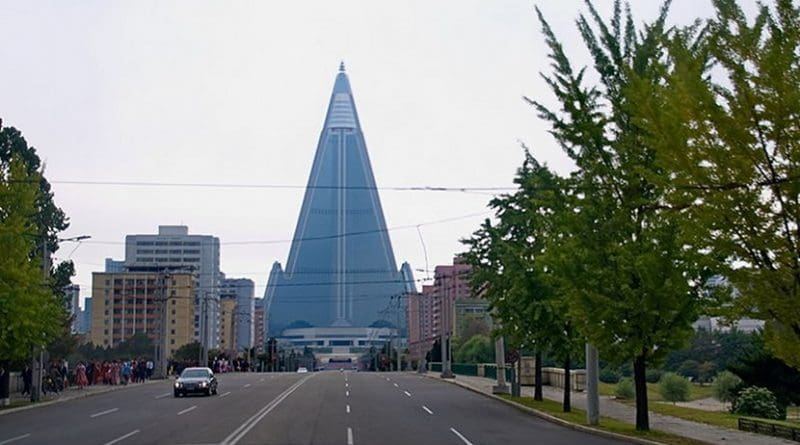What The Pandemic Looks Like In North Korea – Analysis
By IPCS
By Dr Sandip Kumar Mishra*
At a time when even the most resourceful countries have failed to keep themselves safe from the COVID-19 pandemic, North Korea, despite its resource-scarcity, has reported no infections. Foreign nationals who work in the country have said that while there might be a few cases, it does not appear as widespread as in the rest of the world. Contrary to these claims of zero and limited infections, there is also speculation that the real number of infections could be much higher, but have not been registered or acknowledged by the regime. Between these contrarian positions and with little information, is it possible to have a sense of what the pandemic looks like in North Korea?
Any commentary on North Korea must begin with the acknowledgement that there is very limited information available in the mainstream media. However, some NGOs, websites, and North Korea watchers do provide some tentative information. Some claim to have access to informants in the country. Some also base their news on the accounts of defectors, who, despite living outside, have regular communication with families and friends in North Korea.
Although North Korea has not officially recorded any COVID-19 cases so far, it has taken some measures to deal with the pandemic. It started sealing its border with China even before the Chinese New Year Day, which was celebrated on 25 January 2020. In fact, a North Korean official announced the border closure a few days earlier, on 21-22 January. Pyongyang has also been concerned about its cities bordering China, such as Sinuiju and Chungjin. On 31 January, North Korea’s Disease Control Authority sent representatives to Ryanggyang Province to guide local doctors. Border restrictions were further intensified on 17 April 2020.
Inside North Korea, Rodong Sinmun, the daily newspaper, and TV channels are publicising information about measures to fend off the virus. Face masks while using public transport have been made compulsory. Several public places and malls in Pyongyang are closed, and social distancing norms are being implemented strictly. North Korea has reduced the number of national construction projects from 15 to five, reportedly concentrating on the earliest possible completion of the Pyongyang General Hospital project. While the numbers are a bone of contention, there is evidence to indicate that Pyongyang has implemented serious measures, much like other countries, to combat the virus and its spread domestically.
Now, moving on to speculation. Various sources have reported on COVID-19 cases, as well as deaths, in North Korea. As per Daily NK, the first death was reported on 27 January, and by end-February, there were around 20 deaths and over 7,000 people quarantined within the country. By March 2020, as a per military commissioned report obtained by Daily NK, 180 North Korean soldiers had died, and 3,700 soldiers had been quarantined. In April, it was reported that a fever-like disease had spread in Ryanggyang Province, and around 21 people had died because of it.
A fair assessment would tentatively conclude, from the verifiable data as well as unverified information, that even though official North Korean figures (or lack thereof) are misleading, the pandemic is still not very widespread in the country. This could be because of the regime’s reportedly quick and proactive response right from the beginning. The swift closure of borders and deployment of medical teams to help local health officials could have had a significant positive impact. Another contributing factor would be the country’s unparalleled physical isolation from the rest of the world. Most foreign visitors to North Korea are Chinese and Russian, and North Korea closed its borders with these countries quite early. The final and most important factor would be political, i.e. the totalitarian state. State control extends to every aspect of life, which, in this case, would aid the systematic implementation of policy measures on the ground.
Overall, the number of COVID-19 cases in North Korea—whether zero or a few—is disputed, and may be revised if better and more reliable information comes to light in the future. On the other hand, it is also clear that the state has, for its part, attempted several measures to stem the unmitigated flow of the pandemic within its borders. Their success however can only be determined if, and when, there is clarity on what the spread, or numbers, look like.
*Dr Sandip Kumar Mishra is Associate Professor, Centre for East Asian Studies, SIS, JNU, and Visiting Fellow, IPCS.

